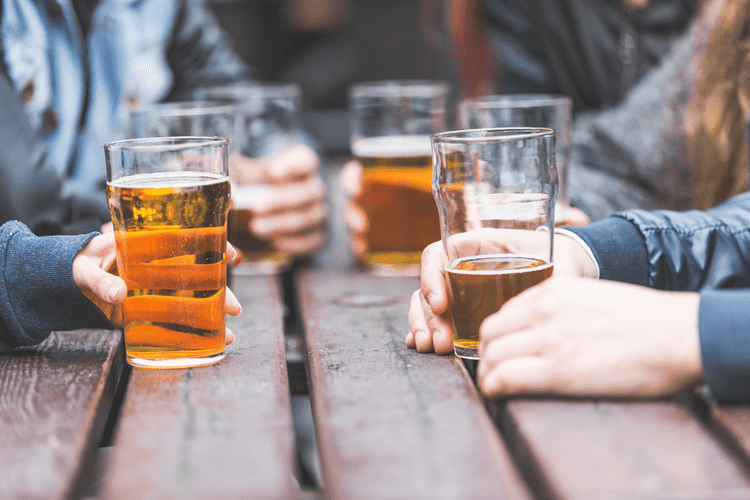Still Tripping: What is HPPD?
Still Tripping: What is HPPD?
It is likely that those following the advice outlined in ‘What helps people with HPPD? Dr. Henry Abraham suggested in 2001 that half of people who saw him clinically recovered from HPPD within five years. This paper was supported in part by grants of the European Commission (Drug Prevention and Information Programme 2014–16; contract no. JUST/2013/DPIP/AG/4823; EU-MADNESS project). The present systematic mini review aims at providing an overview of HPPD, by specifically focusing on both clinical manifestations and psychopharmacological approaches, in general, and among NPS users. As chief Clinical Officer at FHE Health, a nationally recognized behavioral health treatment provider, he ensures quality, innovation, and comprehensive treatment for patients. Learning relaxation techniques like deep breathing or mindfulness exercises can help those with HPPD disorder remain more in control when flashbacks occur.
Trending on NeurologyLive – Clinical Neurology News and Neurology Expert Insights
Catechol-O-methyl transferase inhibition reduces symptoms of hallucinogen persisting perception disorder. While psychosis can occur in various conditions, schizophrenia represents a more long-lasting and complex cluster of symptoms that often needs specialized diagnosis and treatment. Psychosis is a general term where an individual loses touch with reality, causing changes in thinking and behavior. Continue reading more to learn the difference between psychosis vs schizophrenia. Currently, there is no cure for HPPD and no treatment developed specifically for the condition. However, many patients find their symptoms can be effectively managed through a combination of medication, therapy, and lifestyle changes.
Residential Rehab: Why Immersive Treatment Creates Lasting Change
Some of the long-acting first-generation antipsychotics may still be useful in co-occurring Psychotic Spectrum Disorders and HPPD II 58. In one study, haloperidol was noted to reduce hallucinations, but an exacerbation of flashbacks in the early phases of treatment was highlighted as well 1,69. A dosage of 0.75 mg/die of Clonidine has been evaluated as a treatment option for nine HPPD patients 51,59 (Table 4).
Differential Diagnosis
People experiencing these disturbances may be entirely aware of everything else that’s happening. The interruption in your field of vision can be annoying, disturbing, and possibly debilitating. At Virtue Recovery Center, we’re here to help you every step of the way. Our dedicated team of professionals is committed to providing the compassionate care and expert guidance you need to start your journey to recovery. Contact us today, and let’s work together to create a brighter, healthier future for you.

The 64 unique perceptual symptoms we identified showed an overlap of 76% with those characteristic of Alice in Wonderland syndrome (AIWS). Finally, we will reprise the issue of consciousness in the context of HPPD. To establish the course of the HPPD symptoms described, we assessed the latency period between the substance use and the onset of the symptoms, their frequency and duration, and the outcome (with and without treatment). The latency period was documented in 59.8% of the cases, in which in 63.8% the symptoms started relatively early, i.e., immediately (29.3%), within a day (3.4%), or in less than a week (31%). In 12.1% HPPD onset did not occur until a week and in 24.1% more than a month later, with the longest latency interval lasting over 20 years. With regard to symptom frequency, in 30.7% of the patients symptoms were continuous, in 34.1% they recurred daily, and in 36.4% symptoms were intermittent with longer intervals between their occurrence.
- The relationship between HPPD symptom type(s) and psychiatric comorbidity was varied.
- They can help you to determine if you have HPPD and to discuss treatment options.
- HPPD is typically a rare condition, and reports of its symptoms tend to vary.
- As researchers come to understand more about the condition, a more extensive range of treatments may become available.
- The patient reported that he was regularly using LSD and occasionally using cannabis.
Conditions
- Depersonalization refers to the feeling of being detached from your body and thoughts while derealization is the sense that the world is unreal.
- The disorder occurs in about 4.2 percent of people who take hallucinogens.
- Many individuals find relief by documenting their experiences and identifying patterns in symptom intensity.
- For people struggling with addiction, this connection can be profoundly healing.
As the flashbacks become more common, they can become frustrating, even overwhelming. Flashbacks are a feeling that you’re reliving an experience from your past. Read on to learn more about marijuana addiction this phenomenon, why it happens, and how a person might experience it.

Burst CME™: Optimizing the Use of CGRP Targeted Agents for the Treatment of Migraine

In Type 2, the experience is more disturbing and persistent, and an individual may experience consistent changes in vision. Every person who has visual disturbances as a result of HPPD experiences them slightly differently. Researchers believe that people are at risk of experiencing HPPD if they take hallucinogenic drugs recreationally. However, they do not yet understand the type or frequency of drug use that causes it. Researchers do not fully understand how these conditions relate to HPPD, but many report that they experience them alongside visual disturbances. Unlike the immersive flashbacks that some people have after taking drugs, HPPD flashbacks are purely visual.
Drugs that are known to cause HPPD
Studies estimate that roughly 4% of people who have used psychedelics experience HPPD. Sometimes referred to as “flashbacks,” the physical symptoms could cause the world to look “brighter” or more vibrant than usual. Twenty-five HPPD symptom percent of patients fully recovered, and 54.2% partially recovered. Three patients had no symptom recovery, two of which committed suicide. The remaining two patients did not have their recovery status recorded.